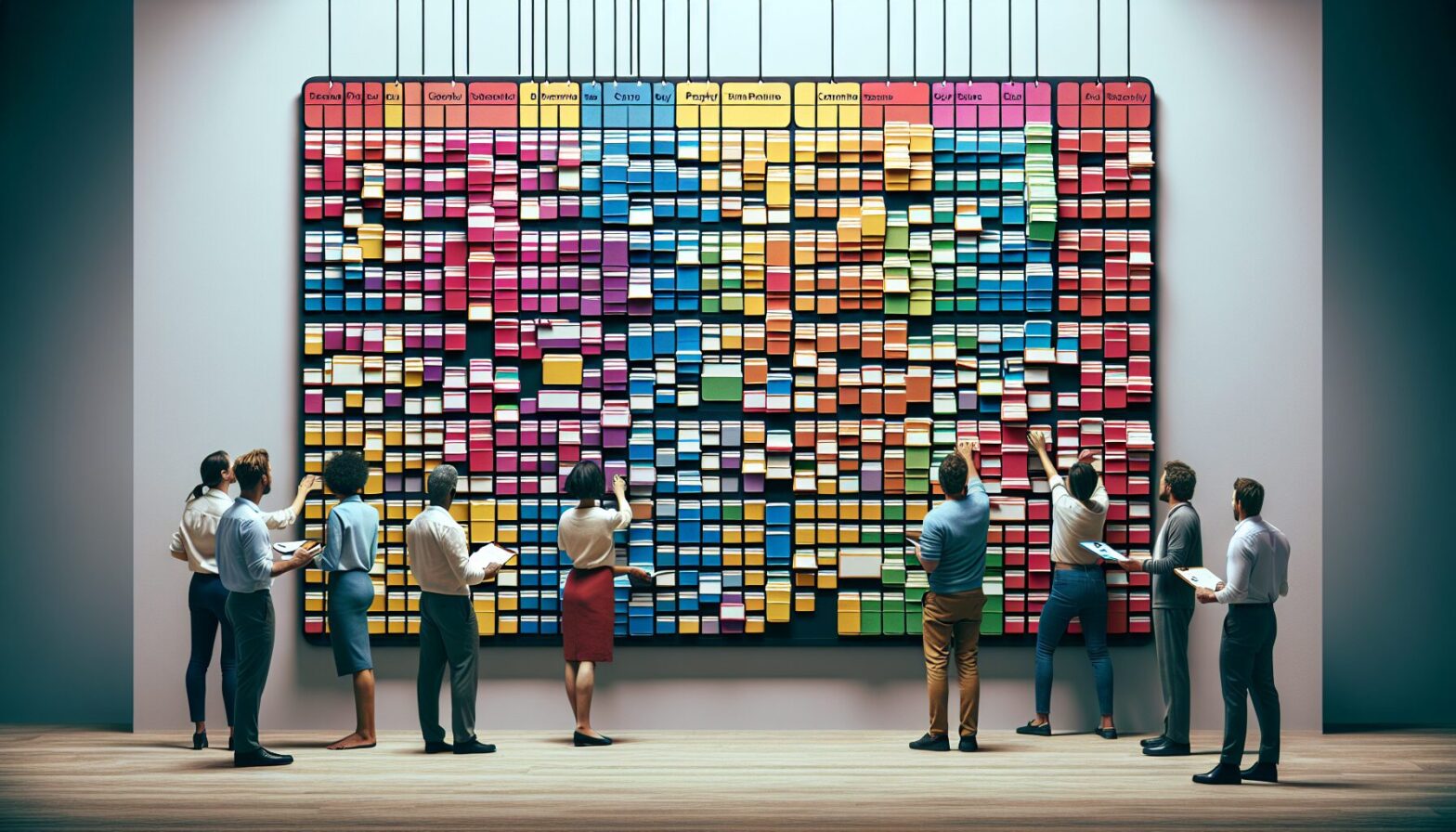Understanding T-Card Project Management
T-Card project management is a simple yet powerful visual scheduling and tracking tool that has been used across various industries for decades. At its core, the system utilises cards—usually colour-coded and labelled—to represent tasks, resources, or project stages. These cards are placed into racks or boards divided into time slots or project phases, providing a tangible and immediate overview of project progress.
One of the key advantages of T-Card management lies in its straightforwardness. Unlike complex digital tools, T-Cards require minimal training and no software installation, making them accessible to teams of all sizes and technological proficiencies. Their tactile nature often encourages more direct interaction and communication among team members, fostering a collaborative environment.
Although T-Card systems may seem old-fashioned in today’s digital era, they continue to offer value by simplifying project tracking and resource allocation. Their physical presence can help reduce information overload and make it easier for teams to visualise workload distribution and deadlines at a glance.
The Cost-Benefit Breakdown of Implementing T-Card Systems
When considering project management tools, cost-efficiency is often a primary concern. T-Card systems typically have a low initial outlay compared to high-end project management software. The cards themselves are inexpensive, and the racks or boards can be custom-built or purchased off the shelf at minimal expense.
Beyond the upfront costs, T-Cards reduce hidden expenses such as training time and software subscription fees. They don’t require continuous updates or technical support, which is particularly beneficial for organisations operating with limited IT resources or budgets. Moreover, their simplicity helps prevent common pitfalls like miscommunication or overlooked tasks, which can lead to costly delays.
On the benefits side, T-Card systems promote transparency and accountability. Team members can clearly see who is responsible for what and when tasks are due. This visual clarity can improve adherence to schedules and reduce bottlenecks. While they may lack some of the advanced analytics of digital tools, the time saved in coordination and error reduction often translates into measurable productivity gains.
When to Choose T-Card Management Over Digital Alternatives
Choosing the right project management tool depends on various factors including project complexity, team size, and working environment. T-Card systems excel in scenarios where teams are co-located and benefit from face-to-face interaction, such as manufacturing floors, maintenance departments, or small creative agencies.
For projects that require rapid adjustments or involve frequently changing schedules, T-Cards offer a hands-on flexibility that digital systems sometimes struggle to match. Physically moving a card from one slot to another can be faster and more intuitive than navigating multiple screens or menus.
However, T-Cards might not be ideal for large-scale projects requiring extensive data integration, remote collaboration, or detailed reporting. In such cases, hybrid approaches can be effective—using T-Cards for daily operational tracking while leveraging digital tools for high-level analytics and remote communication.
Conclusion: Balancing Tradition and Innovation in Project Management
T-Card project management represents an elegant balance between simplicity and effectiveness. Its low cost and ease of use make it an attractive option for many organisations seeking to enhance workflow transparency without overcomplicating processes. While it may not replace sophisticated digital platforms entirely, its role as a complementary tool should not be underestimated.
The choice between T-Card systems and digital solutions is not necessarily an either/or decision. By understanding the specific needs of a project or team, managers can leverage the strengths of both approaches to optimise productivity and communication.
In summary, investing in a T-Card system can yield significant returns in terms of cost savings, clarity, and team engagement—especially in environments where simplicity and immediacy are paramount.
Notes
- T-Card systems can reduce project communication errors by up to 30%.
- Initial setup costs for T-Card management are typically less than £100 for small teams.
- Teams using T-Cards report up to 20% faster task completion times due to visual clarity.
- T-Card usage dates back to manufacturing practices in the early 20th century.
- Hybrid project management approaches combining T-Cards with digital tools are becoming increasingly popular.
